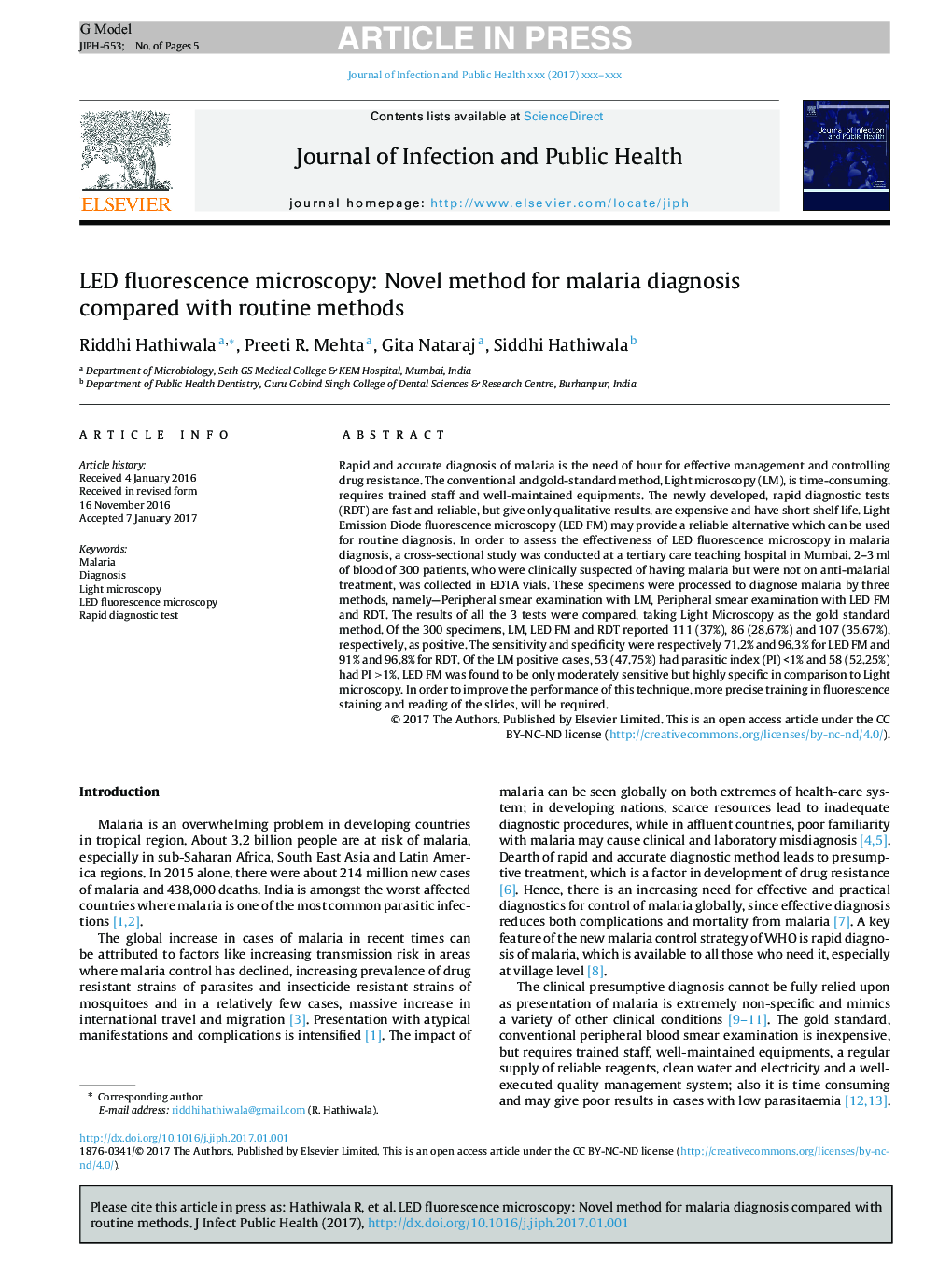| Article ID | Journal | Published Year | Pages | File Type |
|---|---|---|---|---|
| 8746929 | Journal of Infection and Public Health | 2017 | 5 Pages |
Abstract
Rapid and accurate diagnosis of malaria is the need of hour for effective management and controlling drug resistance. The conventional and gold-standard method, Light microscopy (LM), is time-consuming, requires trained staff and well-maintained equipments. The newly developed, rapid diagnostic tests (RDT) are fast and reliable, but give only qualitative results, are expensive and have short shelf life. Light Emission Diode fluorescence microscopy (LED FM) may provide a reliable alternative which can be used for routine diagnosis. In order to assess the effectiveness of LED fluorescence microscopy in malaria diagnosis, a cross-sectional study was conducted at a tertiary care teaching hospital in Mumbai. 2-3 ml of blood of 300 patients, who were clinically suspected of having malaria but were not on anti-malarial treatment, was collected in EDTA vials. These specimens were processed to diagnose malaria by three methods, namely-Peripheral smear examination with LM, Peripheral smear examination with LED FM and RDT. The results of all the 3 tests were compared, taking Light Microscopy as the gold standard method. Of the 300 specimens, LM, LED FM and RDT reported 111 (37%), 86 (28.67%) and 107 (35.67%), respectively, as positive. The sensitivity and specificity were respectively 71.2% and 96.3% for LED FM and 91% and 96.8% for RDT. Of the LM positive cases, 53 (47.75%) had parasitic index (PI) <1% and 58 (52.25%) had PI â¥1%. LED FM was found to be only moderately sensitive but highly specific in comparison to Light microscopy. In order to improve the performance of this technique, more precise training in fluorescence staining and reading of the slides, will be required.
Related Topics
Health Sciences
Medicine and Dentistry
Infectious Diseases
Authors
Riddhi Hathiwala, Preeti R. Mehta, Gita Nataraj, Siddhi Hathiwala,
